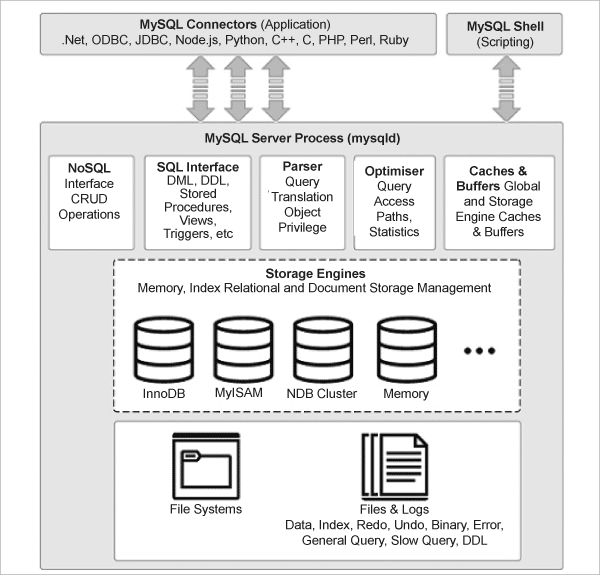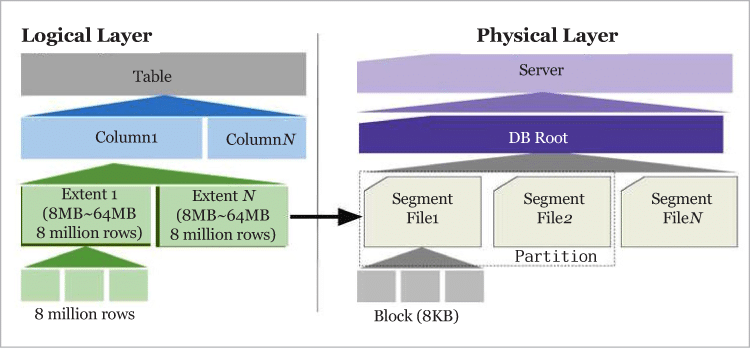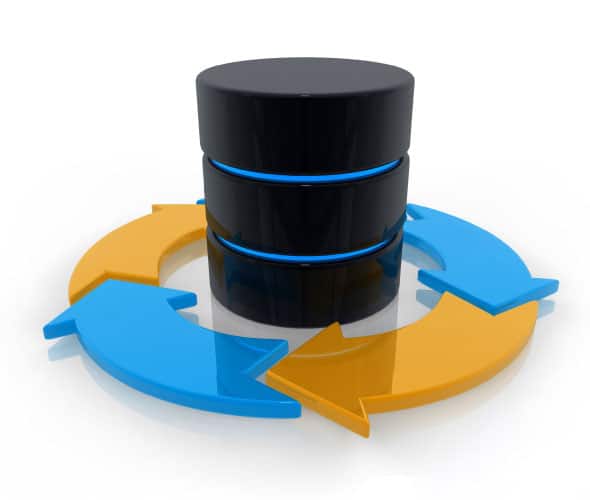An open source database offers a codebase that is available for users to freely download, modify, distribute, and reuse. In this article, we will take a brief look at a few popular database systems that are open source.
In recent years, many database systems have appeared in the market, offering organisations a wide range of options. These databases are from reliable companies such as Oracle, Microsoft, SAP and IBM. Databases from newcomers in this field, such as Google, Amazon and Rackspace, are also getting very popular.
MySQL is the oldest open source database management system. Since then, many new systems have come into the market, while older solutions such as MySQL are being developed further.
Why consider an open source database?
Many organisations still store data outside their enterprise database platforms, due to which there are continuous risks of data security and the availability of support to critical business operations. Integrating these data sources into commercial databases may not be possible due to technical or cost factors. Open source databases provide a robust data management platform without the upfront costs associated with running a commercial database, and the negotiations needed when there is a price increase.
Also, the cost of commercial database platforms may be out of reach for small businesses and startups. Open source databases offer a rich database with a very low-level entry price to develop applications that can scale to support large user communities and workloads.
The most attractive feature of such software is that users can modify it by changing its source code according to their preferences, using very less programming language.

Open source databases are fully developed, just like databases. All the facilities and features that most people require are already a part of the product. Also, users can customise their open source database, and that is why it is very flexible to use.
And, of course, there is a huge community of users for the most popular open source products; so a wide range of documentation is available on them. In addition, there are forums where people can ask questions about these products to the experts.
Let us now take a brief look at the popular open source databases.
| Features | Open source database | Commercial database |
| Flexibility | Open source offers more flexibility to users | Proprietary software is less flexible and often comes with restrictions |
| Maintenance | Developed and maintained by a community | Developed and maintained by the organisation that published it |
| Support | May not have the support or capacity of a proprietary database | Single contact point for any problems that occur |
| Licences | Free to view, download, modify, distribute, and reuse | Does not allow access to the source code or modifications |
| Compatibility | No guarantee that opensource software will work in each user’s environment | Compatible with the user’s environment |
| Cost | Zero, upfront licensing costs | Expensive to license and maintain proprietary software |
| Access to data | With an open format, data sets can be returned from simple SQL query statements | Data cannot be accessed and viewed directly. Custom or proprietary tools must be used to access your data |
| Top databases | MySQL, PostgreSQL, MongoDB, Cassandra | Oracle, Microsoft SQL Server, DB2, Microsoft Access |
Table 1: A comparison of open source and commercial databases
MySQL
MySQL was developed by Oracle Corporation and is written in C, C++ languages. Its stable version is 8.0.27 and the release date for that is October 19, 2021.
MySQL is one of the most popular and widely used SQL databases. It is also one of the top databases in Web applications. Some of the world’s largest organisations (e.g., Facebook, Uber, Google, Adobe) use MySQL.
PostgreSQL
PostgreSQL is a powerful, and perhaps the world’s most advanced open source database with over 30 years of active development. This database is well known for its reliability, feature robustness, and performance. PostgreSQL runs on all major operating systems including Windows, Mac, Linux and UNIX.
PostgreSQL databases provide enterprise-class database solutions and are used by a wide variety of enterprises across many industries such as financial services, government, information technology, and media and communications.
MariaDB
MariaDB is a powerful database solution that is entirely free and supported by the MariaDB Foundation. It is powerful, versatile database software at no cost. MariaDB reads and writes 24 per cent faster as compared to MySQL. It also supports more connections than MySQL, while replication is 2x faster.

MariaDB can be used in any environment that the developer can think of. It can be queried with the help of almost all the popular querying languages.
MongoDB
Mongo DB is a leading NoSQL database. This document-oriented database stores structured data as JSON-like documents with dynamic schemas, due to which the integration of data in some kinds of applications becomes significantly faster and easier. It has a powerful query language that allows you to filter and sort data by any field, no matter how deep-seated it may be within a document. It also supports aggregations and other modern use cases such as geo-based search, graph search, and text search.
CouchDB
CouchDB is an open source NoSQL document database. It collects and stores data in JSON documents that you can access via the Web or query using JavaScript. With a schema-free data model, CouchDB simplifies record management.
CouchDB was launched in 2005. In 2008, it became an Apache Software Foundation project. Whether it is a general-purpose document store, enabling efficient data synchronisation, or adopting an ‘offline first’ mindset, CouchDB gives businesses the flexibility to create durable, reliable, and scalable infrastructures.
| Database | Supported programming languages | Platform | Features | Cloud version |
Price | Database type |
| MySQL | C, C++, Java, Perl, PHP, Python, Tcl, etc | Windows, Mac, Linux | TDE, data masking and de-identification, database firewall, database audit, etc | Yes | Available for free; enterprise edition is chargeable | Relational DBMS |
| PostgreSQL | .NET, C, C++, Delphi, Java, JavaScript (Node.js), Perl, PHP, Python, and Tcl | Windows, Mac, Linux | Creation of own data types, building custom functions, features for data integrity, etc | No | Free | Relational DBMS |
| MariaDB | Python, PHP, C, C++, Java, JavaScript, D, Ruby, Pearl | Windows, Mac, Linux | GIS, JSON, encrypted connection, high availability features, etc | Yes | Free; get a quote for the MariaDB platform | Relational DBMS |
| MongoDB | C, C++, C#, Java, Node.js, Perl, PHP, Python, Ruby, Scala, Go, and Erlang | Cross-platform | ACID transactions, powerful query language, rich JSON documents, etc | Yes | Free | NoSQL DBMS |
| CouchDB | Java, C/C++, Scala, JavaScript | Windows, Mac | Easy replication of a database across multiple server instances, fast indexing and retrieval, REST-like interface for document insertion, updates, retrieval and deletion, JSON-based document format | Yes | Free | NoSQL DBMS |
| Cassandra | Java, C#, Python, Ruby, JavaScript | Windows, Mac | Automatic replication of data to multiple nodes for fault tolerance, linear scalability, processes massive amounts of data at a fast rate | No | Free | NoSQL DBMS |
Cassandra
Cassandra is a NoSQL distributed database management system written in Java. It can handle large amounts of data across multiple data centres and in the cloud. Its ability to handle high volumes makes it particularly beneficial for major corporations such as Apple, Facebook, Instagram, Uber, Twitter, Cisco, Rackspace, eBay, and Netflix. It is the most trusted database for scalability and high availability with no single point of failure.
How to choose the right open source database for your needs
There are numerous database management systems available in the market. Choosing one can be very challenging for users. You have an array of options available in relational (MySQL, PostgreSQL, Oracle DB, etc) and non-relational (MongoDB, Apache HBase, Cassandra, etc) databases. But not one of them fits all kinds of project requirements. Each has some advantages as well as a few disadvantages.
Asking a few important questions related to your project can help identify the right database.
- How much data will be stored when the application is mature?
- How many users will handle data simultaneously at peak load?
- How much scalability, data consistency, latency, throughput and availability does your application need?
- What is the budget to cover licences and support contracts?
- How often will the database schemas change?
- What are the preferred programming languages?
- What is the geographic distribution of your user population?
Is open source the future of database management?
In the last few years, many companies have been turning away from proprietary software and adopting open source software. As a result, open source databases have become very popular.
These databases now support a range of modern applications, from the most popular mobile apps to leading e-commerce platforms. Fast-growing companies and large enterprises prefer open source databases due to their low cost, freedom from traditional licence models, flexibility, community-backed development and support, and large ecosystems of tools and extensions.
It is no surprise that if organisations want to use open source databases, they will also want to use them in the cloud, and companies such as Amazon are making that happen.
AWS offers MySQL, PostgreSQL, MongoDB, and Redis, among others. The Microsoft Azure cloud supports PostgreSQL, MySQL, and others. Public cloud suppliers like Google, DigitalOcean, Rackspace, and others support a range of open source databases.
According to a 2019 open source data management software survey conducted by database experts Percona, 89 per cent of developers are using at least one open source database. Gartner predicts that by 2022, 70 per cent of applications will feature some sort of open source database. Incorporating an open source database into your development workflow is becoming rather important. Soon, it will be non-optional.
According to a CNBC report, MongoDB’s market cap swelled past US$ 32 billion in September 2021, making it the most valuable open source company on record. Companies such as MongoDB and Databricks, which have developed market-leading products that work across major cloud platforms built by Amazon, Microsoft and Google, are thriving as customers invest in moving their data and applications from traditional data centres to the cloud.
Just like the emergence of open source software has transformed the software industry, open source data management systems have transformed the database solutions industry. Open source DBMSs are popular because of their flexibility and cost-effectiveness, and are making organisations take a relook at the database solutions they use.












































































